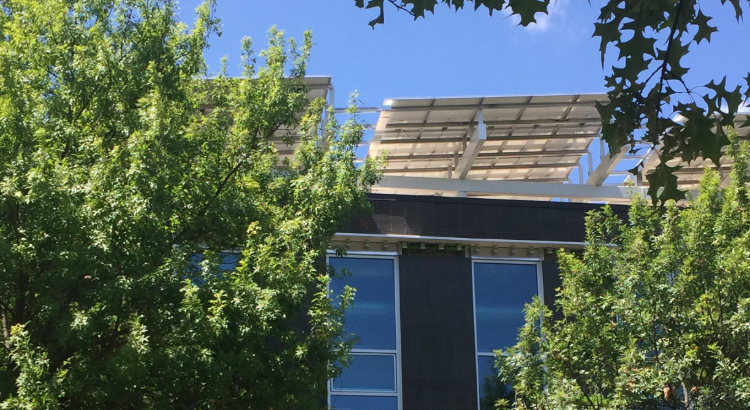Upon completion of the Kendeda Building for Innovative Sustainable Design, we asked seven team members to reflect on their work on a complex Living Building Challenge project. As a lens, they used the LBC’s seven Petals. Check out all the Petal Columns by clicking here.
When first asked to write a column on beauty, I questioned the notion. Who am I to tell others what beauty is?
Even for a core member of the Kendeda Building design team, beauty is a deeply personal reflection. It is taboo — akin to politics, religion and sex, it may only be discussed in private (or on social media) and usually just with those you know in advance will agree with you.
Surely this is why other third-party sustainability certification programs do not address beauty head on. In the end, however, not discussing beauty only leads to misconceptions and misunderstanding. It drives us all further apart — much as keeping the topics listed above private does.

So the Living Building Challenge sets itself apart. It requires that our thinking as designers be holistic. It asserts that solutions that are not beautiful or inspiring are not solutions at all because they lack the emotional connection that is so important in inspiring and leading people.
But still the question remains: What is beautiful? And who gets to decide?
One would think that the creative process would be straight forward on this point; beauty is an essential and necessary part of design. And yet … mandating beauty is an impossible task. Very quickly, any definition becomes a cultural, personal and social challenge.
The International Living Future Institute, which operates the living building certification process, has always addressed beauty through its own values. It notes that “the intent of the Beauty Petal is to recognize the need for beauty and the connection to nature as a precursor to caring enough to preserve, conserve, and serve the greater good.”
In the version of the LBC that we followed for the Kendeda Building, the central themes of the Beauty Petal revolved around inspiration, education and art. In LBC 4.0, which was unveiled this summer, biophilia has been added to the petal, and it provides one possible framework around which to process the idea of beauty.
Simply, biophilia means the affinity people feel for all forms of life, including other people. Our innate connection and attraction to all living things was first noted in 1964 by social psychologist Erich Fromm, and then brought into modern dialog by author, biologist and conservationist E.O. Wilson in 1984. In a society in which 93 percent of our time (on average) is spent inside buildings, and 11 hours a day are spent interacting with some sort of electronic device (including the author as I type this on my computer), the connections between beauty, nature and inspiration are of particular importance.
We seek nature and connection with other human beings; this connection is a part of our evolution and a key to happiness. Upon entering spaces that are well designed and connect people to place, culture, climate and nature, we are spontaneously calmed, comforted, excited, invigorated.
So LBC links beauty to a chain of thought that leads to the very core of what it means to be human: beauty as inspiration; inspiration as connection to nature; connection to nature – the most innate desires in all of us – our love of life – as a focal point to try to remove subjectivity. Certainly, this seems like the right starting point.
The results are, in my view, beautiful. Upon entry, the Kendeda Building atrium just feels right. Uplifting. Nearly religious for those of us who dedicated the last four years to its creation.
Wood is a primary structural material, and it is exposed to reveal its patterns and texture. The use of natural light and shadow create dynamic interior and exterior spaces that change with the movement of suns and clouds on a daily and seasonal basis. These expressions of beauty deepen when the visitor reflects that they are synergistic with other key tenets of the project, such as reducing the project’s embodied carbon footprint and generating more power than the building uses.
The building is surrounded by a diverse and native plant palette that interacts with the larger ecosystem. It produces food, shelter and habitat for both people and other species, strengthening our interconnections. Seen in the context of the city, this monumental project both reinforces and celebrates the history and shared identity of Atlanta as a city in the trees. But it also paves a path forward: We can only imagine in this new place that we have created that this project will inspire others to ensure that the great legacy of Atlanta endures.
Joshua Gassman who led the design team for the Kendeda Building for Innovative Sustainable Design, is sustainable design director at Lord Aeck Sargent. He speaks frequently on sustainability issues at national and regional conferences on design and construction.



Thank you for sharing, this building and philosophy behind it is amazing, Congratulations to everyone involved with the project. I hope we can see more of this in the future. Awesome!